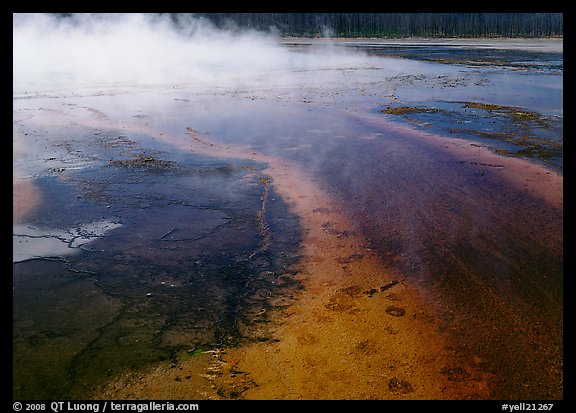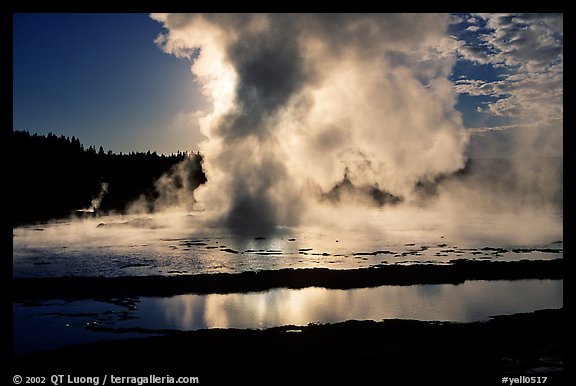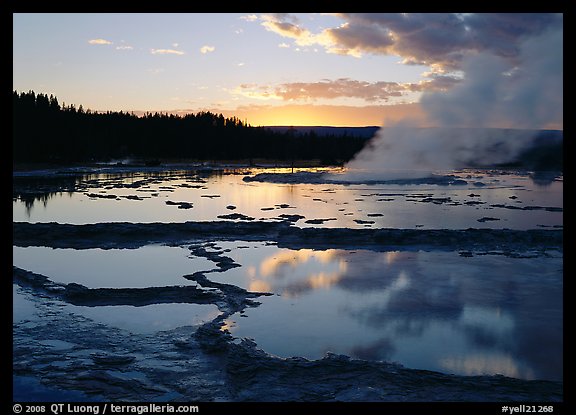Photo Spot 14: Yellowstone National Park – Grand Prismatic Springs and Great Fountain Geyser
No Comments
Established in 1872, Yellowstone National Park is America’s first national park. Although Yellowstone preserves a large terrain with varied resources such as mountains ranges, lakes, rivers, waterfalls, canyons, and large wildlife, it was created and is mostly known for geothermal features. There are as many of them in Yellowstone than in the rest of the world combined. With that many geysers and hot springs to choose from, it can be difficult to know where to photograph.
While a visit to Yellowstone must include Old Faithful, the most popular geyser in the world, and its Upper Geyser Basin, as far as to the colorful Morning Glory Pool, I’ll highlight here two other favorite less known locations in the park further up the road to Madison.
The Grand Prismatic Spring is the largest hot springs in the US (third in the world). While you look from the outside at the hot springs in the Lower Geyser Basin, here a boardwalk let you step right onto the springs for great wide-angle compositions. Pigmented bacteria grow in the mineral-rich water. As each bacterium has its own color, and the temperature of the water favors one bacterium over another, the springs is a rainbow of colors.
If you’re into aerial photography, that would be the place to fly over. A straight down aerial image of the springs reveals its size, structure, and colors like no others. Alternatively you could hike up the hill for a view from above. You cannot get there from the springs, the trail head is about a mile down the road. However, the springs would be a bit far (telephoto needed to isolate features of the spring), the angle quite oblique, and some trees are in the way (incorporate them into your composition).
The Great Fountain Geyser, as implied by its name, is a fountain-type geyser, which means that it erupts through a pool of water in a series of bursts. This travertine-decorated pool of water makes for great reflections, certainly more interesting than the dry terrain around Old Faithful. The western ridgeline behind the geyser is quite low, so if you are lucky, you could shoot the sun setting right behind the geyser. Intervals between eruptions range from 9 to 15 hours, thus you’ll need to find the predicted times for eruption at the Visitor Center near Old Faithful. Once you have them, it’s not that difficult to catch, as the prediction times are generally accurate to within one or two hours, and the eruption lasts between one and two hours. Great Fountain Geyser has also the distinction of being the only geyser that can be observed from your car, which makes waiting in inclement weather easier.




